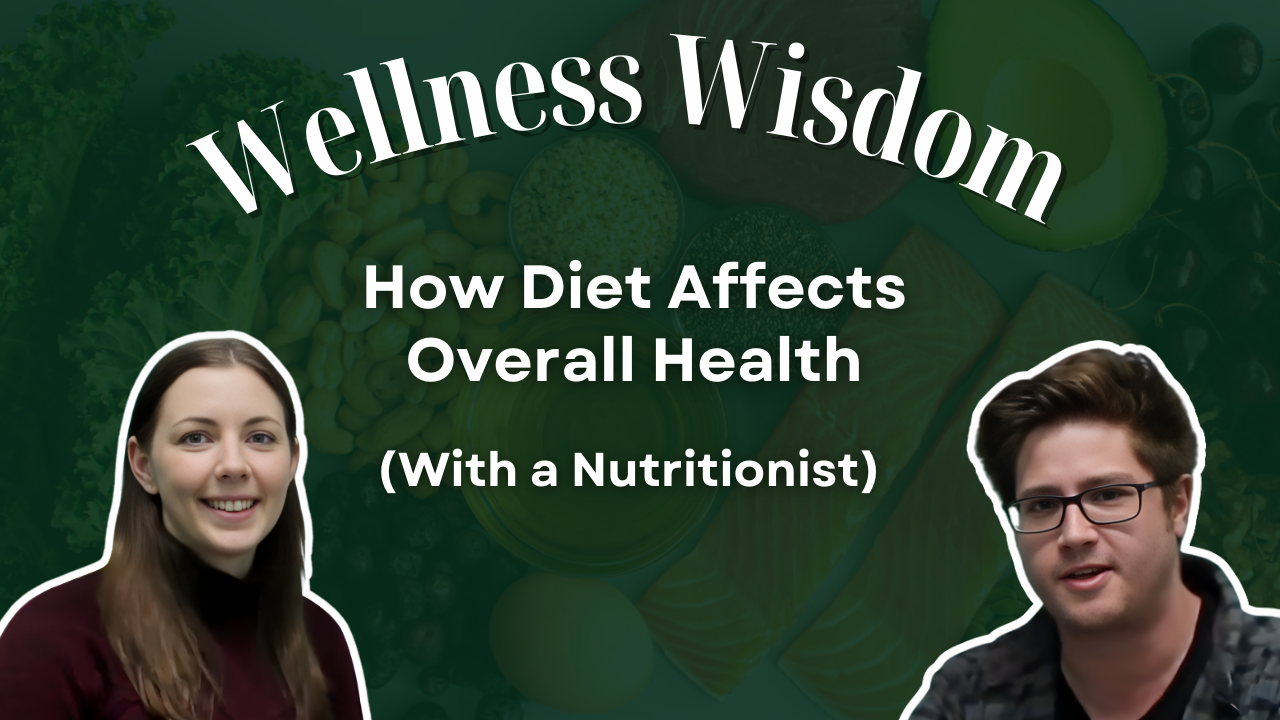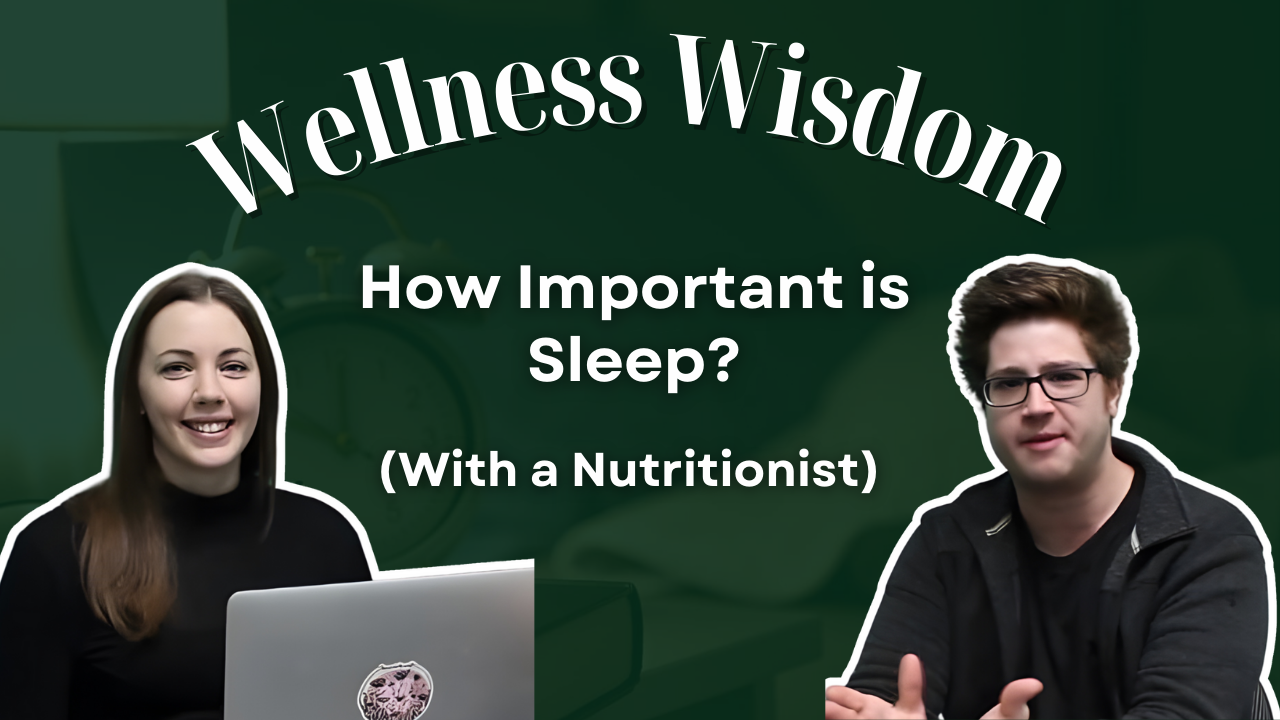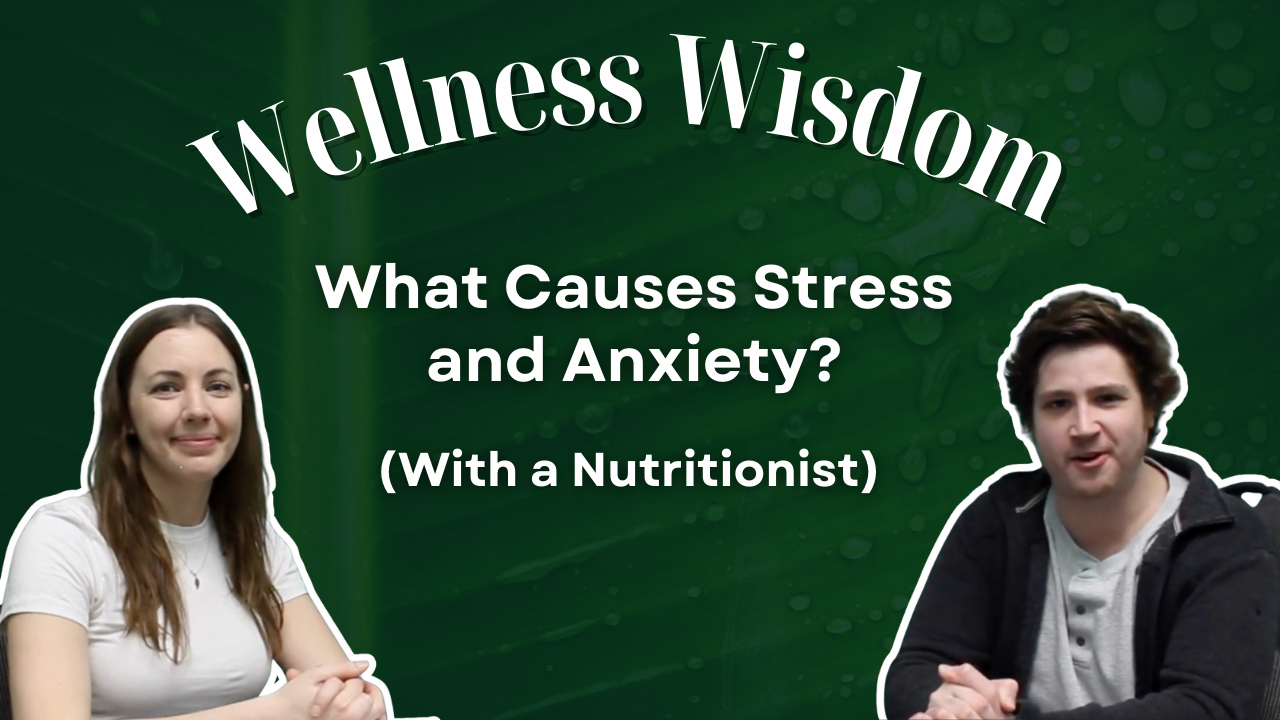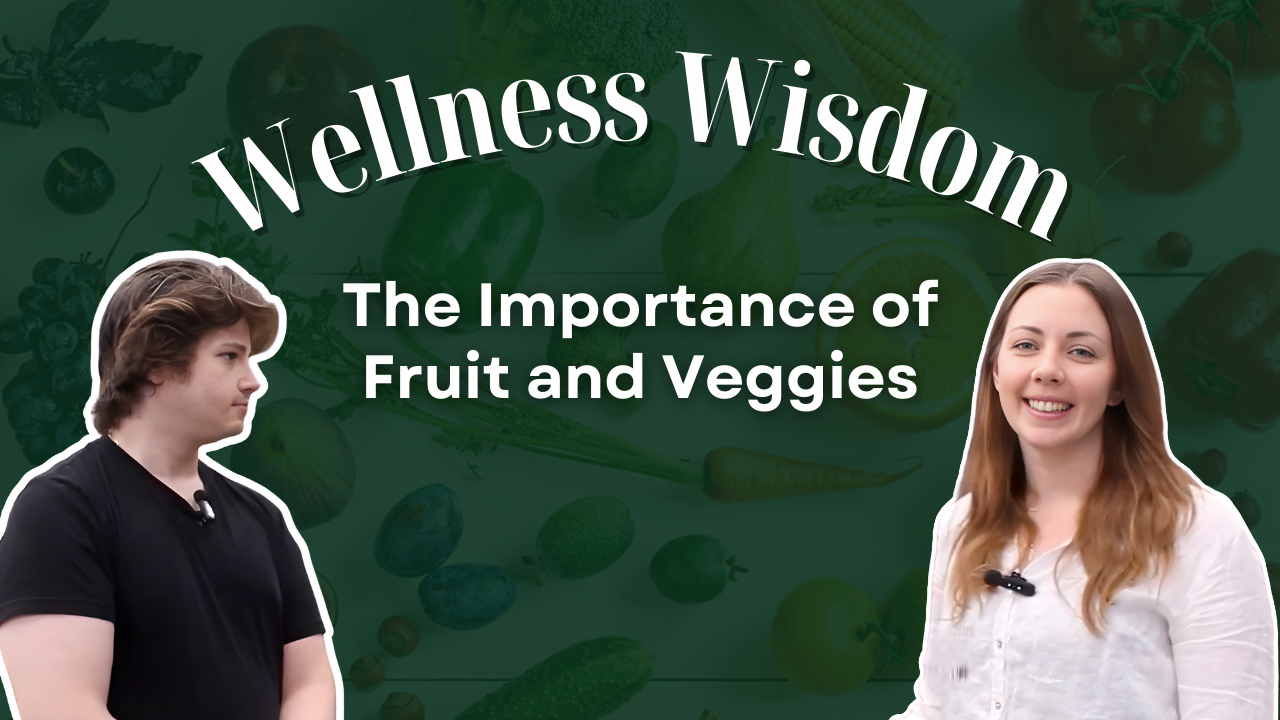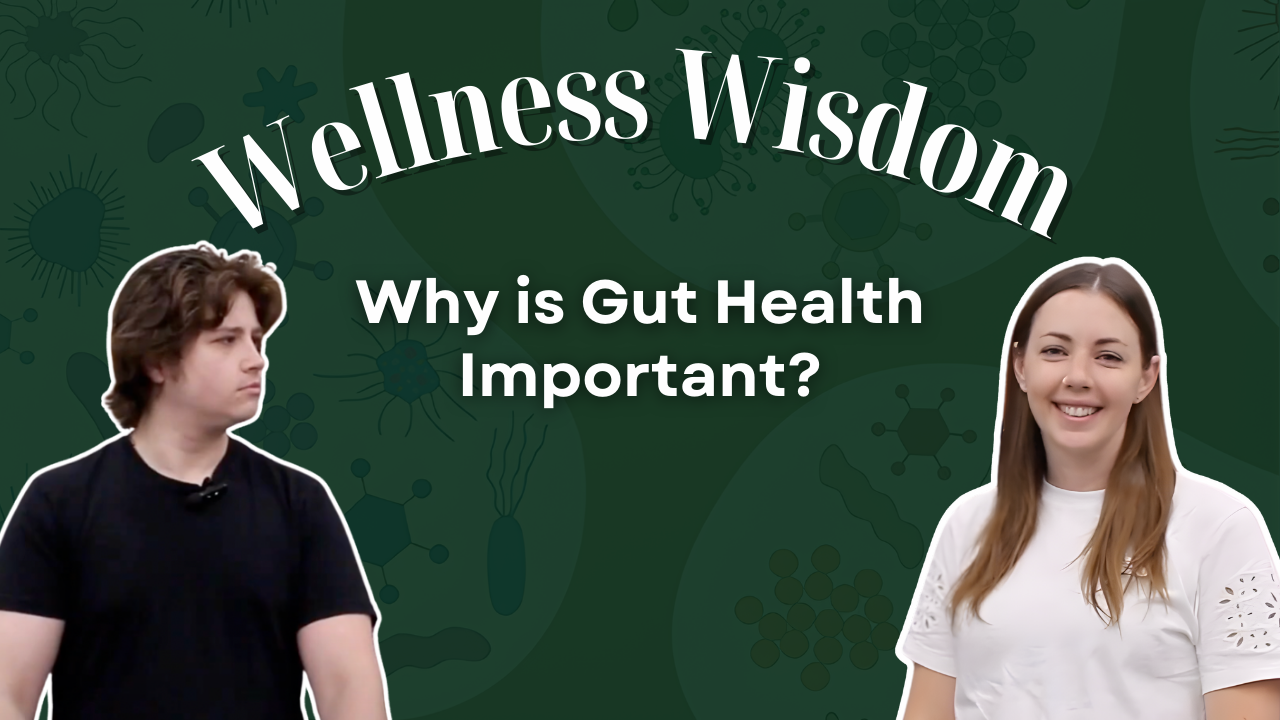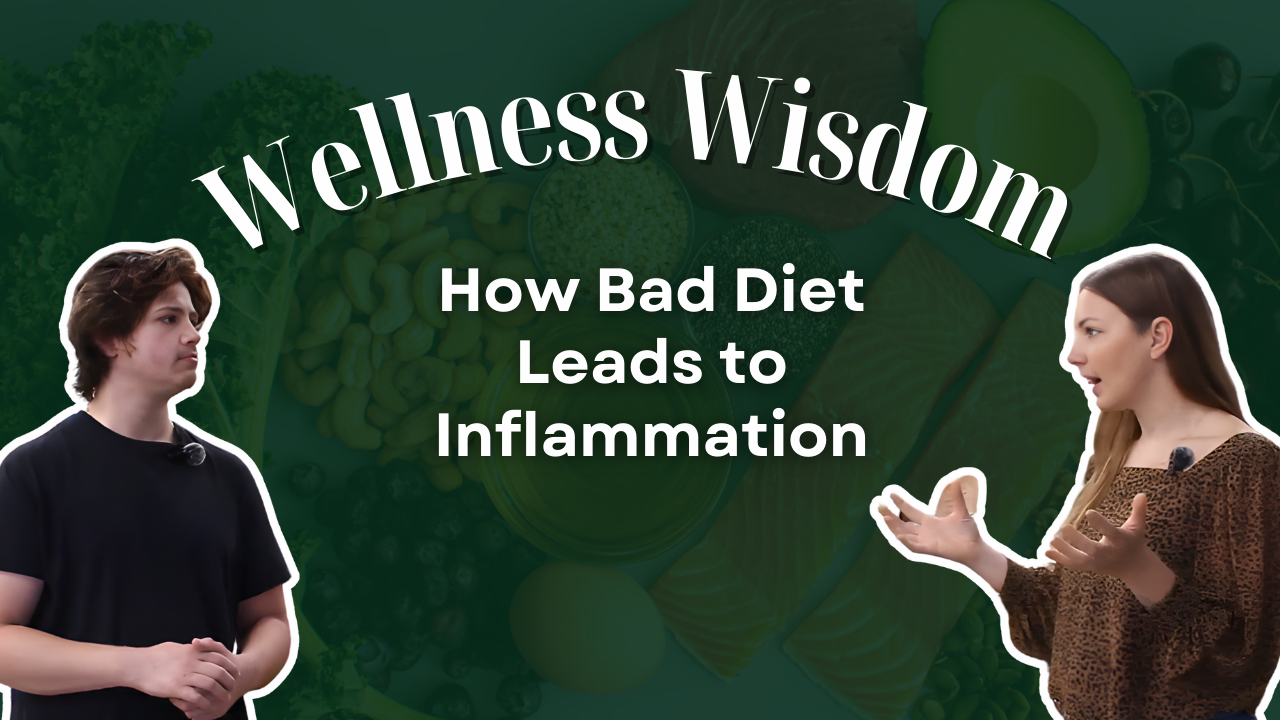By Jonathan Tessier
•
December 11, 2025
Simple Ways to Improve Your Health with Fresh, Nutrient-Rich Foods Discover the health benefits of fresh organic produce! Learn how carrots, strawberries, blueberries, tomatoes, and bell peppers can support eye health, antioxidants, fiber, hydration, and overall wellness. Tips from nutritionist Rebecca at Joanne’s Place. We have a full transcript of the episode below. Wellness Wisdom Episode 8: Fruits and Veggies Jonathan: Hi, I'm Jonathan Tessier and we're back here with another one of our Wellness Wisdom series with our nutritionist, Rebecca. How are you doing, Rebecca? Rebecca: Morning. I'm good. How are you this morning? Jonathan: I'm good, I'm doing, not bad. So one of the great things about Jo Anne's Place is we have many supplements and many other things that can help so many different problems that you might have, but we also have fresh organic produce and that is just, you know, if you're a foodie like me, it's just a great thing. So let's talk a little bit more about our produce. So we got a lot of really great stuff here, so let's just get into it. Like what do you want to talk about first? Rebecca: Let's just maybe start right here with our carrots. So we kind of focus on some more in season veggies that we can talk about, which is awesome because nutrient content of in season veggies is that much higher. It hasn't traveled as far, it's usually from local farms. Then that's something that we try to source as much as we can as well. So yeah, so carrots. So what do you know about carrots? Jonathan: All I know is that think about carrots as I believe they give you better eyesight because of the beta carotene in them. Rebecca: You got it. Yeah, exactly. That's the main like powerhouse in the carrot. So beta carotene is like a precursor to vitamin A, so it will convert to vitamin A and super high in carrots for beta carotene and exactly it's shown to help prevent things like macular degeneration and cataracts. So a really good thing to add. And I just wanted to spin off of how cool it is to have all this beautiful like organic produce. You know, there's a saying that says you can't supplement a bad diet. So of course we've got all these options for different supplements if you know, you have conditions that need that, but really your diet. That's the foundation of your health. So you really want to make sure you've got that solid foundation and then kind of layering in supplements on top of that. They can, supplements can certainly get you to where you want to go a little bit faster, but you really want that foundation in place of really awesome foods. Jonathan: Absolutely. Yeah. So that's a little bit about carrots. Let's talk about strawberries, I think that's one of our one of my favorite berries for sure. Rebecca: OK, definitely in competition with blueberries. Yeah, what do you know about strawberries? Jonathan: Ohh, I know... They're very delicious. I enjoy eating them. Yeah, that's about it though. Rebecca: Fun fact, really high in vitamin C. I know we often think of like our oranges for vitamin C content, right? But that and actually we'll get to our peppers, strawberries and vitamin C. Strawberries and peppers are very high in vitamin C, so that's really good. Excellent source of fiber as well and then as with any of those deep dark berries, the fruits really high in antioxidants, right. Do you know what an antioxidant is? Jonathan: Not exactly. Rebecca: One of our staff here that's been here for quite a long time and she does a really good job at having an analogy for antioxidants and free radicals. So basically what antioxidants do is they kind of neutralize free radicals. So what free radicals are are like an electron with an unpaired molecule. So they're kind of going around your body trying to find a friend trying to pair that last kind of molecule. And what antioxidants do is they donate that so they neutralize those kind of molecules in your body. So the way that Anne talks about it is like, think about a person in a bad mood. They're kind of going around and maybe they're a little bit grumpy to the cashier. I know that's not our customers, but maybe a little bit grumpy to the cashier. And then the cashier's kind of like got their back up and they're kind of bummed. So they're going to go maybe be a little bit grumpy to the next person they see. That's kind of like a free radical and then an antioxidant is one of those really wonderful people that can maybe kind of sense that and give out a hug or give it a warm smile. Think of those as kind of your antioxidants, right? So strawberries, they're like a very nice customer that comes in and exactly that's right and cheers up our kind of whole day. So yes, really high in antioxidants and might as well just jump to blueberries in that case. So same thing. One of the highest antioxidant ratings in blueberries and both fruits, berries in general just being really high in fiber, which is really important as well, and really low glycemic. Jonathan: So you're not going to spike your blood sugar by consuming berries. They're a nice, safe fruit that way, right? So they do have sugar in them, but it's not like eating a chocolate bar. Rebecca: That's right. You got it. And especially with that high fiber content, that glycemic index is so much lower. So you've got a little bit of sugar, but you've also got that fiber, awesome antioxidants in there as well, right? Jonathan: For sure. We got some other stuff here. One thing we got is some grape tomatoes here, and I'm a big fan of tomatoes. You know, a lot of people don't like them, but I personally really enjoy them. So what can you tell me about tomatoes? Rebecca: So tomatoes are rich in lycopene. So lycopene is another one of those antioxidants. Specifically that one is studied to help with cancer prevention. You'll find that lycopene and a lot of our prostate supportive supplements as well. So that's really great. Kind of notes about tomatoes, but also nice water content, so really hydrating. Really high in fiber as well. So really good absolute option. Jonathan: And then we got bell peppers here. Now this is something I use a lot. I use them like salads and use them to put on meat and stuff. And what I've heard is that a red bell pepper has more vitamin C than an orange actually. Rebecca: You got it yes. And you know, actually I, I never heard it put this way until I was doing some research. One of the highest nutrient content in your bell Peppers, not so much your green Peppers, but those specifically maybe red bell Peppers, orange bell Peppers, is one of the most nutrient dense foods, which is a really cool fun fact, especially these ones are so easy to eat with like a dipper or something. With like bottle ones, I love eating those so and then of course, you know, you've got high in fiber. Most of these veggies are going to have a good fiber content. Jonathan: Absolutely. And here we got some things. Now, I'm not gonna say I'm a fan of these because I'm not really, but they're so good. What can you tell me about beets? Rebecca: They are one of like... caramelized beets or roasted beets... are one of my favorites. Have to try it in the oven. I'll try it in the oven. Not pickled beets. If that's your first introduction, you're probably not a beet fan. But so again, you look at this deep dark color, right? Really going to be high in AP oxidants. Beats are really liver supportive. So excellent for liver. Yeah, those are kind of fun facts. And you can eat the greens. I will say it's not my favorite thing. They're a little bit. Could be, could be the chef actually might be the problem, but you can actually eat the beans. These beet greens are really excellent for you as well. Jonathan: Well, that's very interesting. I didn't know that actually. OK, well, the other thing we got here, these are cucumbers. Can you tell me about cucumbers? Rebecca: So really high hydration content, like water content. Like cucumber, which is really awesome, great for hydration, really awesome fiber in there as well, but high in the mineral silica as well. And that's really important for like skin. So connective tissue. So fun fact about your cucumbers, and they're just, I mean, I know I'm a big fan. They're just really delicious. Can I share a recipe that I really like with you? Jonathan: Sure. Yeah. Rebecca: So carrots. Something my partner and I've been doing a lot is appealed carrot salads. So basically you take your veggie peeler, you can take off the skin. I don't always if I wash my carrots, I might leave the skin on. But you just peel like ribbons of carrots and do a bowl. And then you add sesame oil, salt, pepper, red chili flakes. And then what else you're going to add some like rice vinegar, just like a really quick. Any kind of salad, and then you're getting all your beta carotene in there. But it is delicious. Jonathan: That does sound really good, honestly. And the thing about cucumbers, I believe with the sun out, these are, like I said, they're very hydrating. So it's good to eat these kind of foods when it's hot out, right? Rebecca: Got it. Yeah, That your watermelon too, of course. Really high water content, especially for those people who really aren't water drinkers. I often recommend those really like water heavy fruits. Yeah, Yeah. Especially during these hot times. Definitely. There's something you can get out of that for sure. Also, I mean, you must-- you've got to be a corn lover. Jonathan: O f course. Rebecca: Obviously, yes. I expect everybody to be. So sweet corn is one of those other really awesome, like, summer, veggies actually available, you know, through into the fall. As well. So your corn really high fiber content, but actually another really important antioxidant, lutein is something that you can find in corn. So that's really great for your eyesight as well. So pair that with some carrots and you're really taking care of your eyes. And then cherries, yeah, I mean, I've been like buying bags and bags and bags of cherries already this year. One of my favorites. So again, what do you think of like you think of these deep dark colors are going to be really high in antioxidants as well. So that's really great thing about cherries and then really high fiber content. So with all of that said, I think something that we've hit on in almost every single video is how important the diversity of the foods that you're eating. Because you get, you know, vitamin C from this fruit, vitamin K from this veggie, minerals from this, you know, root vegetable, all these different things. So really important to diversify your plate and make sure you're eating all different colors, all different types of fruit and veggies. And then, you know, you're getting all those different really antioxidant powerhouses and, and nutrients. Jonathan: I know a lot of people hear the phrase certified organic, but we don't exactly. Some of us don't exactly know what that means. So what exactly does it mean? Rebecca: Yeah, so there's lots of different kind of stipulations that go into organic, but the main thing you're looking at is it's not containing any synthetic herbicides, pesticides, fertilizers. And if something certified organic, that also means it's non-GMO. As well, So you can feel really good about that, right? But I know for me, I, I can't always buy all of my produce organic. I don't know about you. Financial health is really important to all of us. So I know for me, financial health is really important and, and times are a little tougher this year, let's be honest. So I can't always buy all of my veggies and fruit. So that's where something like The Dirty Dozen and the Clean 15 list come in. Have you ever heard of that before? Jonathan: I have, but I'm not completely sure about it. Rebecca: So the Environmental Working Group puts The Dirty Dozen and the Clean 15 list together every year. And what they do is they test the pesticide content in fruits and veggies after they've been peeled. So The Dirty doesn't is exactly what it sounds like. It's twelve of the most kind of highest tested pesticide fruits and veggies. So you've got your dirty dozen list and then your clean 15 list as well are the is the opposite end of the spectrum. So the veggies that maybe you don't need to spend your money on buying organic, you know we do. See that nutrient contents and organic foods tend to be higher kind of overall. But you know, like we said, financial health is important. So take a look at that. I think we've got it posted on our social media, maybe even on our website as well , that Dirty Dozen and Clean 15 list. And then you can know kind of where to prioritize your money that way. Some things off the top I know, are, you know, Peppers. For one that you may want to buy organic, they're a little bit heavier, more heavily sprayed blueberries as well, another one that you may want to purchase organic. And strawberries are another one too. But carrots I believe are one on your clean 15 list. So maybe that's something you don't necessarily have to buy organic. Jonathan: And also, if you have any other questions about any of this kind of stuff you can always come into Jo Anne's and one of our highly educated associates will inform you about all the many different things about the products that we have here. But that's gonna do it for us today. Thank you very much for watching. Have a good day,


